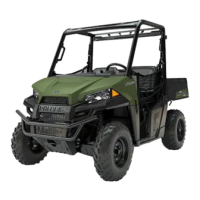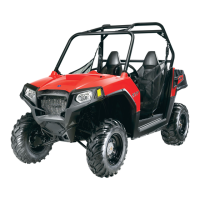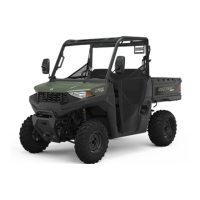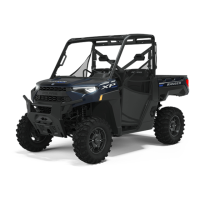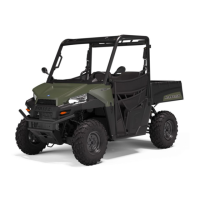DRIVING THROUGH WATER
Your vehicle can operate through water up to a maximum recommended depth
equal to the floorboards.
NOTICE
If your vehicle becomes immersed or is operated in water that exceeds the
floor level, service is required before starting the engine. Your dealer can
provide this service. If it's impossible to bring the vehicle in before starting the
engine, perform the service outlined on page 108, and take the vehicle in for
service at the first opportunity.
Follow these procedures when operating through water:
• Determine water depths and current before entering water.
• Choose a crossing where both banks have gradual inclines.
• Proceed slowly, avoiding rocks and obstacles.
• Avoid operating through deep or fast-flowing water.
WARNING
The large tires on your vehicle may cause the vehicle to float in deep or
fast-flowing water, which could result in loss of control and lead to serious
injury or death. Never cross deep or fast-flowing water with your vehicle
• After leaving water, always dry the brakes by applying light pressure to the
pedal repeatedly until braking action is normal.
NOTICE
After running your vehicle in water, it's critical that you perform the services
outlined in the Periodic Maintenance Chart. Give special attention to engine oil,
transmission oil, front and rear gearcases (if equipped), and all grease fittings.
DRIVING IN REVERSE
Follow these precautions when operating in reverse:
• Always check for obstacles or people behind the vehicle. Always inspect left
and right fields of vision before backing.
• Always avoid backing downhill.
• Back slowly.
• Apply the brakes lightly for stopping.
• Avoid turning at sharp angles.
• Never open the throttle suddenly.
73
OPERATION
